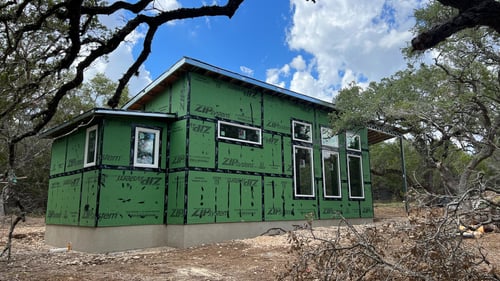Accessory Dwelling Units, commonly known as ADUs, are secondary housing units built on a single-family residential lot. These units can be in the form of a granny flat, an above-garage apartment, a detached cottage, or an in-law suite. ADUs offer several advantages to homeowners, including an additional rental income stream and increased property value.
Understanding ADUs and their Investment Potential
ADUs have emerged as a compelling opportunity in the realm of real estate and urban development. These versatile structures offer more than just additional living space. They present a unique investment opportunity that has captured the attention of homeowners, investors, and policymakers alike. As housing costs rise and affordable living solutions become increasingly limited, understanding the potential of ADUs is essential for anyone looking to make informed decisions in the real estate market.

Generate Rental Income
ADUs provide homeowners with a significant opportunity to increase their rental income. By creating a separate living space on their property, homeowners can attract tenants seeking affordable housing options without compromising on privacy and comfort. The rental income generated from ADUs can help offset mortgage payments, property taxes, and other maintenance costs, creating a sustainable and passive source of revenue.
Boost Property Value
Investing in an ADU can significantly enhance your property's value. The additional living space not only makes your property more attractive to potential buyers but also boosts its overall market value. As the demand for multi-generational living and rental properties rises, having an ADU becomes a valuable asset for future resale.
Comparing ADU's to Other Investments
The increasing allure of ADU's has prompted investors to scrutinize their potential returns against conventional rental properties. Understanding and weighing the pros and cons of each will aid in your informed decision-making and ultimately maximize your returns in this dynamic real estate market.
ADUs vs. Traditional Rental Properties
When comparing ADUs to traditional rental properties, ADUs come out on top due to their lower investment costs and higher rental yields. Unlike buying an entirely separate property for rental purposes, building an ADU typically costs less and can generate comparable or even higher rental income. Additionally, homeowners benefit from living in close proximity to their rental property, making it easier to manage and maintain.
ADUs vs. Vacation Rentals
While vacation rentals can be profitable, they come with some challenges, such as seasonal fluctuations in demand and higher operating costs. ADUs, on the other hand, offer a consistent and reliable stream of rental income throughout the year. The long-term nature of ADU tenancy provides homeowners with stability and a more predictable income source.
Overcoming Common Challenges
Regulatory Hurdles
One of the primary challenges in ADU investments is navigating local zoning regulations and building codes. Fortunately, in an effort to combat the affordable housing crisis, local governments are making it easier than ever for homeowners to construct an ADU on their property. Here at Volstrukt, we can help guide our clients to obtain the necessary permits and ensure that their ADU construction is compliant, saving them time and frustration.
Construction Costs and Financing
Financing the construction of an ADU is a concern for many homeowners. With Volstrukt steel framing systems, our efficient manufacturing method reduces construction costs while maintaining high-quality standards, making investing in an ADU more affordable and attractive.
